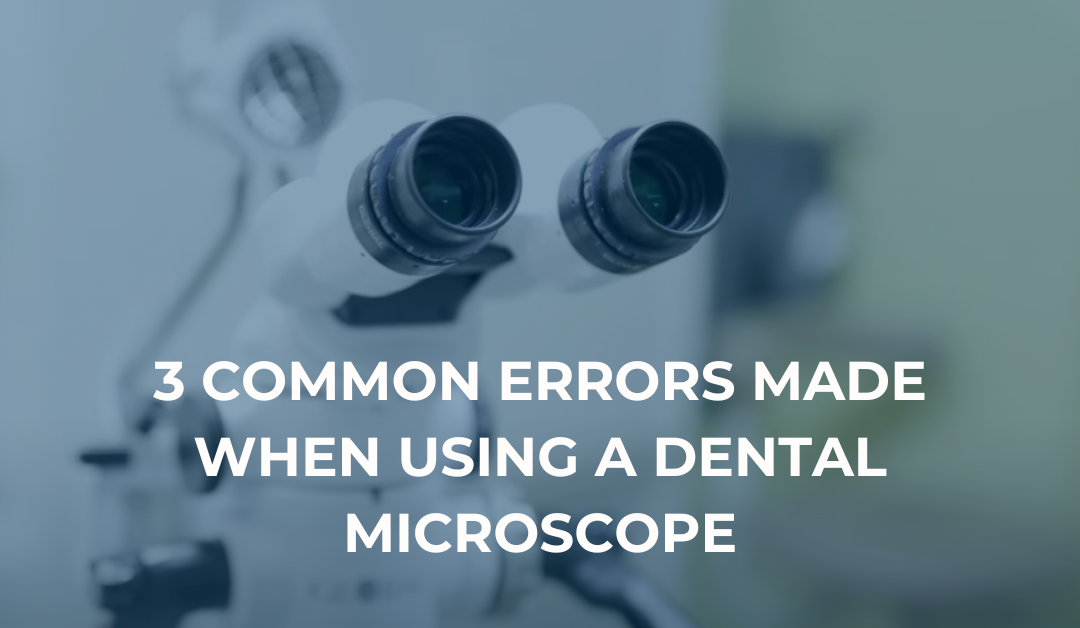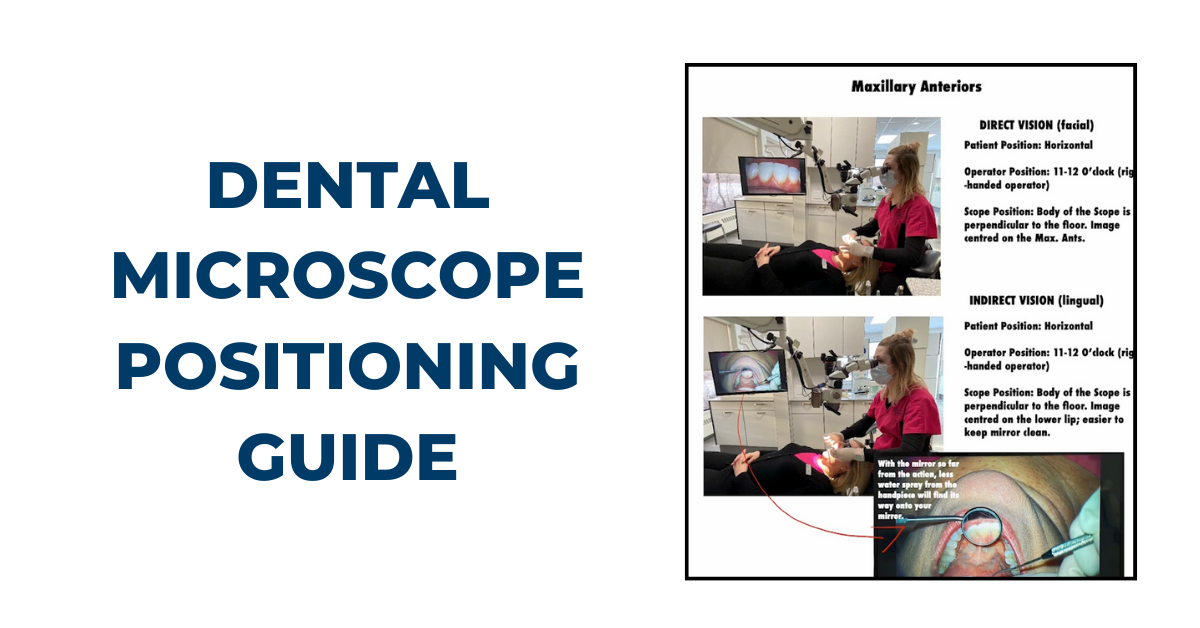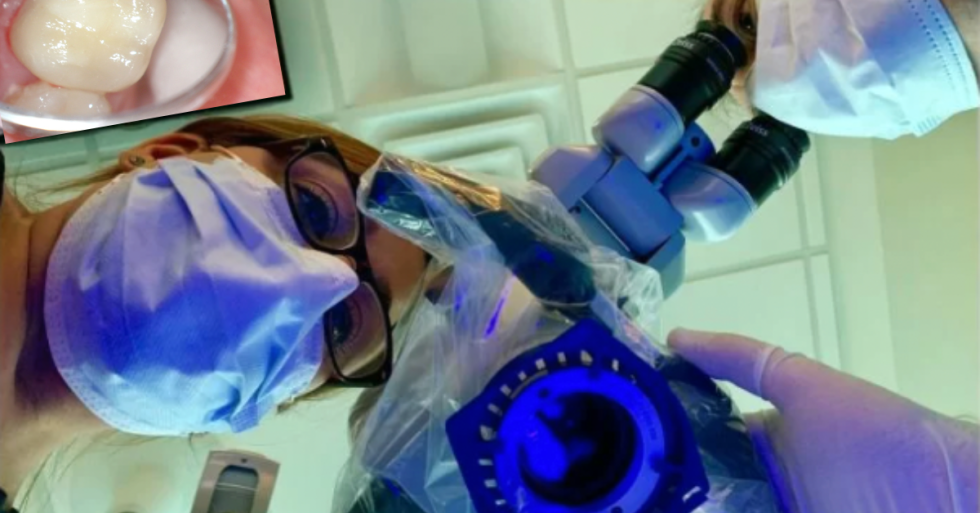Troubleshooting 3 Common Errors Made when Using a Dental Microscope

One of the leading reasons doctors add a dental microscope to their practice is for enhanced visibility, giving greater accuracy and precision during diagnosis and treatment planning. Being able to see the finer details of anatomy such as cracks, caries and canals can be the difference between detection/prevention and a small issue becoming a much larger problem for your patient down the road..
Over 25 years ago, we became one of the first companies to focus on the emerging dental microscopy market. Being in the business as long as we have, our customer and technical service teams have extensive experience working with dentists around the world, helping them become proficient users of their scopes as quickly as possible.
To help you make sure you’re successful as well, we’re discussing three of the most common errors dentists make with a microscope and how to avoid them.
- Using magnification that is too high
- Lack of practice
- Changing techniques too rapidly
High Magnification
Over the years, we’ve observed a tendency for new users to jump right in with magnification that is too high for their level of experience, particularly during surgeries. Higher powers of magnification narrow your field of view and decrease depth. This concept is important because utilizing high magnification during a procedure definitely improves your ability to see fine details but, without training, can cause difficulty navigating the oral cavity. Even small movements become greatly amplified when working under high magnification, so it can become more difficult to track your movements without the correct amount of training/practice.
In these circumstances low magnification of 2-5X may be more beneficial. Higher magnification of 8-13X may be useful when dissecting within a small area requiring less movement, e.g. in papilla preservation techniques.
In general, magnification should allow the doctor to operate with ease, without increasing their usual operating time required for a particular surgical procedure. With training and experience, doctors can operate between magnification levels easily, and can evaluate when the advantages of higher powers of magnification outweigh a narrower field of view.
Lack of Practice
As previously mentioned, adjusting to using a dental microscope takes practice, particularly when you have little to no experience with magnification. Even dentists that are seasoned loupe users need a period of training to adjust from the lower level magnification from loupes.
One reason practice makes doctors more successful with a scope is because your eyes and hands are learning new coordination using indirect vision. For a brief learning curve, you may experience higher than average operating times, while you’re learning how to position your body. Positioning not only impacts your ability to adjust magnification, it also has the potential to benefit your ergonomics as well.
For a comprehensive look at your health benefits from using a scope, continue reading: Ergonomic Benefits of a Dental Microscope.
Once you are able to perform more difficult procedures as a matter of routine, you may find even your technique during simpler surgeries will improve (even if these are performed with lower magnification).
Changing Techniques Too Rapidly
When discussing dental microscopes, many scientific publications emphasize new techniques or technological advances, some of which are mainly for research while others are so sophisticated that they are beyond the scope of most clinicians in practice.
A dental microscope is not only useful in research and for specialists, but also helps a general practitioner to perform routine dental care with greater precision and accuracy. With experience on a dental microscope, doctors do not need to necessarily change their techniques, but should continue with those with which they are most familiar. After adjusting to using a dental microscope, you may consider applying new techniques as your skill level with a microscope improves.
More Value With a Global Microscope
At Global Surgical, we’re committed to your success, with durable products and our knowledgeable Technical & Customer Service teams. And, we guarantee your peace of mind with our limited lifetime warranty (US & Canada only).
Many of the doctors we speak with begin using their scopes with nearly every patient – from observation and diagnosis to treatment planning and procedure, so we know it’s important they are able to use their scope effectively. But don’t just take our word for it, hear from doctors who have used Global microscopes in their practices:
- “Not only have my neck and back issues subsided, but with the better lighting and magnification that I now have, I am able to diagnose and treat dental problems better (and earlier)! I see things now that I know I would have missed without the microscope.” – Dr. Doug Hanneman, DDS
- “My scopes provide shadow less light into the hard to see areas that I as a dentist have to overcome every day. The scopes provide visualization of difficult angles that were very difficult for me to see and access in the past.” – Dr. Stacey Ochoa, DDS
- “When you see something magnified with amazing illumination you are transported to a different world.” – Dr. Gurpreet Khurana, DMD
- “The visual and lighting enhancement provided by the operating microscope opens a whole world of therapeutics for my patients benefits.” – Dr. Jeffrey Krupp, DDS
Questions? Reach Out!
If you’re just getting started with a dental microscope, or considering adding a scope to your practice, we are here to help! We can help configure and customize your scope to your clinical needs, helping you get started as quickly as possible. Our Technical & Customer Service teams are rated among the best in the business.
In fact, one doctor reviewed his experience at Global as: “I have never purchased a product that had better customer service than my Global Microscope. It’s great to know that I can pick up the phone and have an entire team of experienced professionals willing to help me promptly.” – Dr. Osvaldo Z. Mayoral, D.M.D.
Get started by reaching out to us at 800-861-3585 or by clicking the button below.



